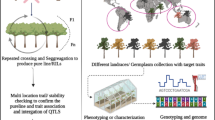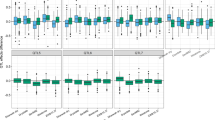Abstract.
QTL mapping experiments in plant breeding may involve multiple populations or pedigrees that are related through their ancestors. These known relationships have often been ignored for the sake of statistical analysis, despite their potential increase in power of mapping. We describe here a Bayesian method for QTL mapping in complex plant populations and reported the results from its application to a (previously analysed) potato data set. This Bayesian method was originally developed for human genetics data, and we have proved that it is useful for complex plant populations as well, based on a sensitivity analysis that was performed here. The method accommodates robustness to complex structures in pedigree data, full flexibility in the estimation of the number of QTL across multiple chromosomes, thereby accounting for uncertainties in the transmission of QTL and marker alleles due to incomplete marker information, and the simultaneous inclusion of non-genetic factors affecting the quantitative trait.
Similar content being viewed by others
Author information
Authors and Affiliations
Additional information
Electronic Publication
Rights and permissions
About this article
Cite this article
Bink, .M., Uimari, .P., Sillanpää, .M. et al. Multiple QTL mapping in related plant populations via a pedigree-analysis approach. Theor Appl Genet 104, 751–762 (2002). https://doi.org/10.1007/s00122-001-0796-x
Received:
Accepted:
Issue Date:
DOI: https://doi.org/10.1007/s00122-001-0796-x




